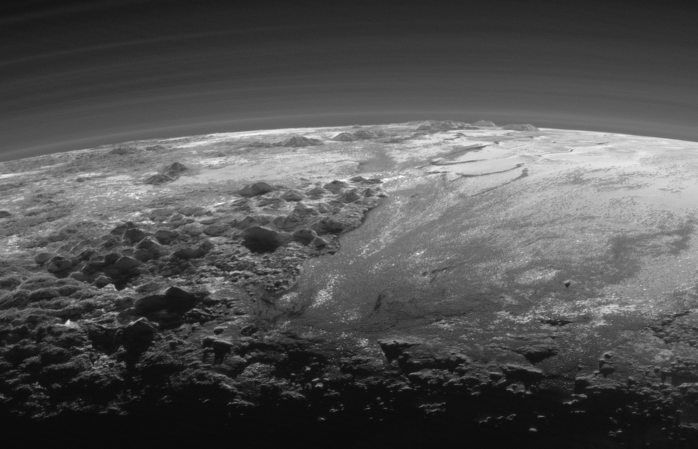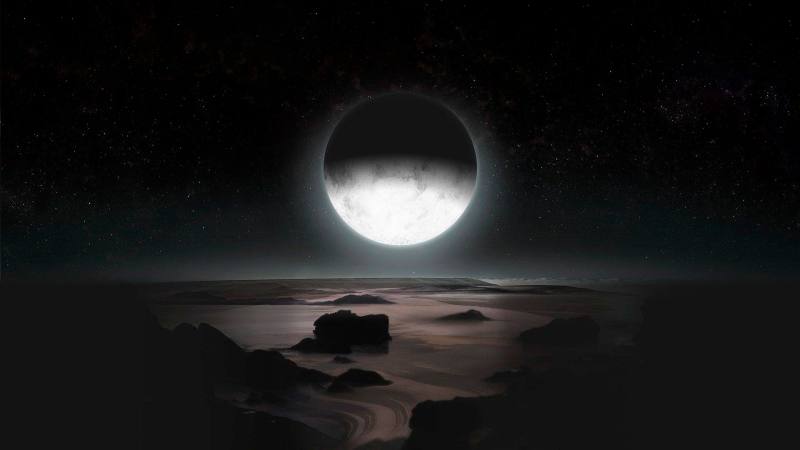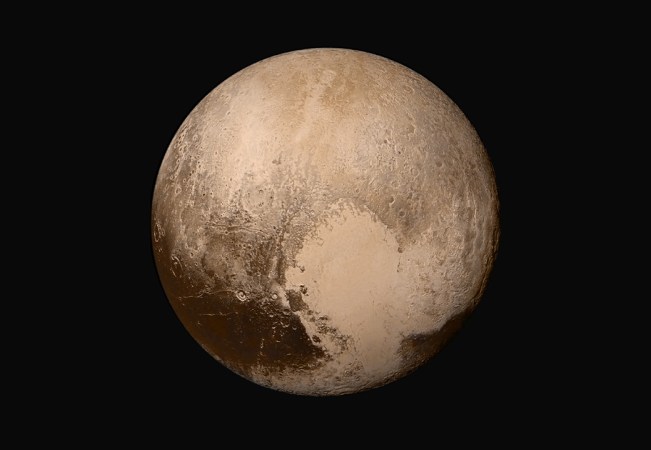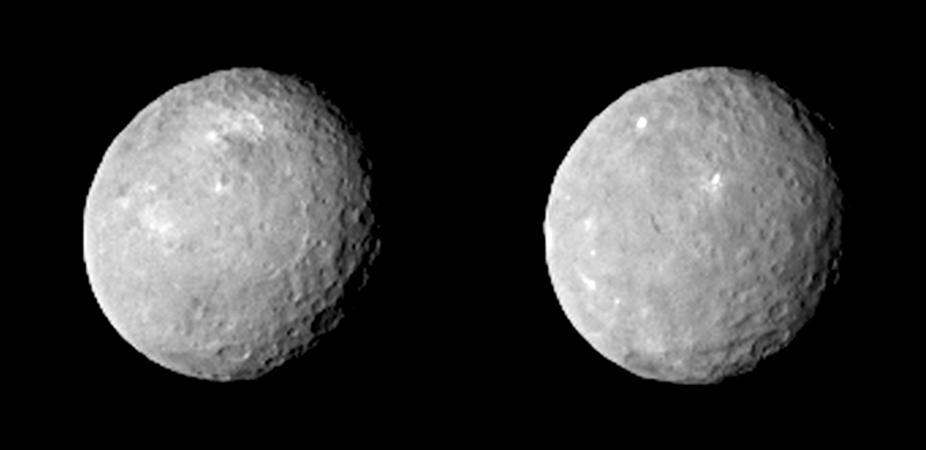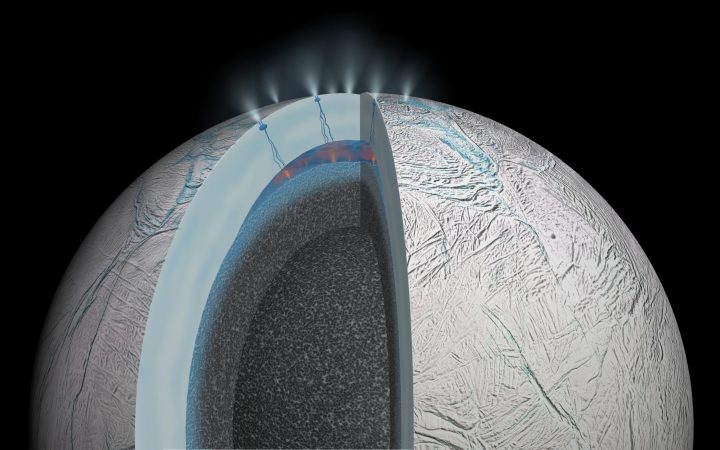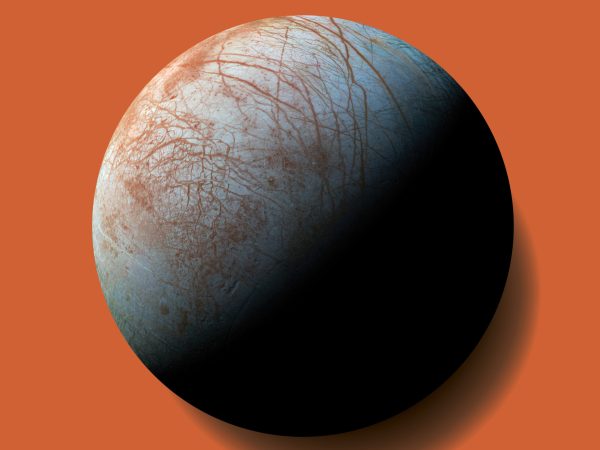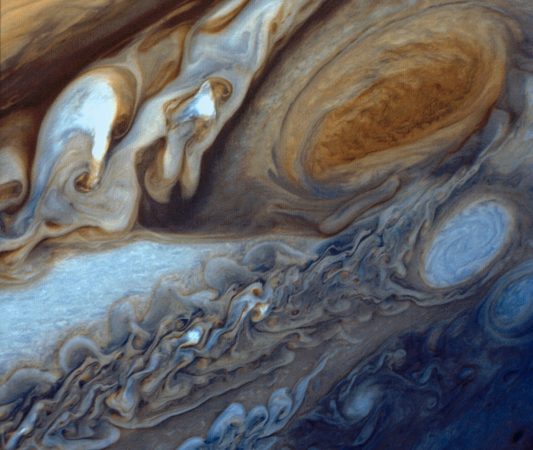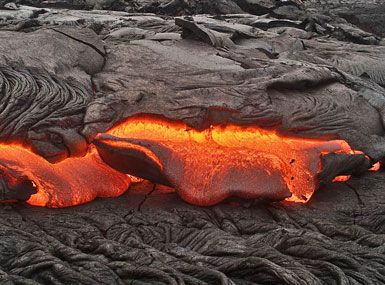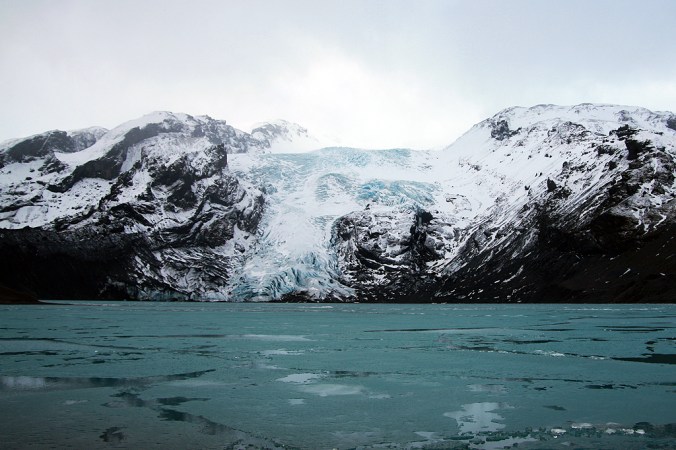

A mysterious, knobbly region on Pluto’s surface was once the site of volcanic eruptions that oozed forth massive amounts of ice. Stunning images captured by NASA’s New Horizons spacecraft have revealed this chilly volcanic activity.
Scientists analyzed the topography and chemical composition of the rugged landscape, which includes domes almost the height of Mount Everest. They determined that the area experienced multiple periods of ice volcanic activity that occurred fairly recently. The findings indicate that Pluto’s interior might be warmer, or better at retaining heat, than previously assumed, the researchers reported on March 29 in Nature Communications.
“One big takeaway is that Pluto and [its moon] Charon and all these bodies in the outer solar system are not these cold, dead things,” says Steven Desch, a planetary scientist and astrophysicist at Arizona State University in Tempe who wasn’t involved with the new research. “They are active geologically, and they do a lot of interesting things.”
The volcanoes we’re familiar with on Earth spew molten rock. On distant frigid worlds, a similar phenomenon occurs when ice is heated within the crust and thaws enough to flow up through cracks in the surface, Desch says.
Ice volcanism (also known as cryovolcanism) is thought to occur on bodies such as Charon, Jupiter’s moon Europa, Neptune’s moon Triton, and the dwarf planet Ceres. As the slush erupts onto the chilly surface and hardens, it can accumulate in mounds or flood over the ground to form plains, says Kelsi Singer, a planetary scientist at the Southwest Research Institute in Boulder, Colorado and coauthor of the new report.
[Related: Frigid Pluto may have had a toasty start]
She and her collaborators suspected that a region to the southwest of Pluto’s Sputnik Planitia ice sheet may once have been a hotbed (or coldbed) of cryovolcanic activity. Today, it’s covered in enormous domes that are carpeted with smaller bumps and form a rough, “undulating” terrain, Singer says.
“There’s lumps on top of lumps, and then there’s even smaller texture on top of that,” she says. “It’s not smooth at any scale that we can see.”
The lumpy features visible in the pictures snapped by New Horizons as it zipped past Pluto in 2015 cover an area of about 300 by 600 kilometers, or 186.4 by 372.8 miles. However, there may be even more signs of volcanic activity shrouded in darkness, Singer says.
To investigate whether the odd mounds were evidence of cryovolcanism, the researchers built a topographical map of the area using images captured from many different angles. This allowed them to make detailed estimates of the shapes and sizes of the domes, the largest of which reached roughly 7 kilometers (4.3 miles) in height and had a volume similar to Hawaii’s Mauna Loa.
The team realized that the region was dotted with mounds from many different vent sites, some of which had merged together over time. Additionally, the researchers identified bumps that appear to be “overprinted” on older features, indicating that multiple volcanic episodes had occurred. Based on the lack of impact craters left on the surface, Singer and her colleagues concluded that much of the cryovolcanic activity happened—geologically speaking—pretty recently, perhaps within the last 100 million to 200 million years.
“We can’t rule out that it’s ongoing,” she says, noting that volcanoes on Earth can go dormant for many years between outbursts. “There could be more episodes to come.”
During its flyby, New Horizons also collected data on the terrain’s chemical composition. The researchers determined that the cryovolcanic mounds were primarily water ice with smaller amounts of frozen nitrogen and other compounds mixed in. Different types of ice have their own melting points and other properties, Singer says, which would have influenced how the structures formed.
She and her collaborators used computer models to simulate how cryovolcanism could have created the domes. The process probably wasn’t explosive like many Earthly eruptions. Rather, it might have resembled the slow percolating formation of bulbous structures called pillow lavas “but on a giant scale,” Singer says.
[Related: How Pluto keeps its secret ocean warm]
Pluto lies far from the sun’s warmth, in the ring of icy objects beyond Neptune’s orbit known as the Kuiper Belt, and has an average surface temperature of -387 degrees Fahrenheit. To keep moving in these bitterly cold temperatures, the “lava” that emerged from Pluto’s cryovolcanoes likely contained salts that acted like antifreeze. Even so, the material was probably a smoothie texture or nearly solid ice that flowed similarly to a glacier. “We imagine it more as a toothpaste-like or silly putty-like kind of flow, where it’s not completely fluid,” Singer says.
The new paper makes “a pretty strong case” for cryovolcanism on Pluto, Desch says. The findings also add weight to the possibility that Pluto’s interior is warm enough to host liquid water. Scientists have speculated that an ocean may be located more than 60 miles beneath the surface, where the icy shell meets the rocky core. To feed the cryovolcanic activity Singer and her team observed, however, Pluto may also have “little pockets of warmer areas” of water or partially melted slush at shallower depths, she says.
“If this is corroborated as cryovolcanism, it basically clinches the case for subsurface liquid, which the models have been leaning towards in the last decade or two,” Desch says. “And if Pluto has subsurface liquid, it’s likely a lot of the Kuiper Belt objects do, so it has a lot of far-reaching implications.”



